Month: March 2016
Kolkata: A Timeless City
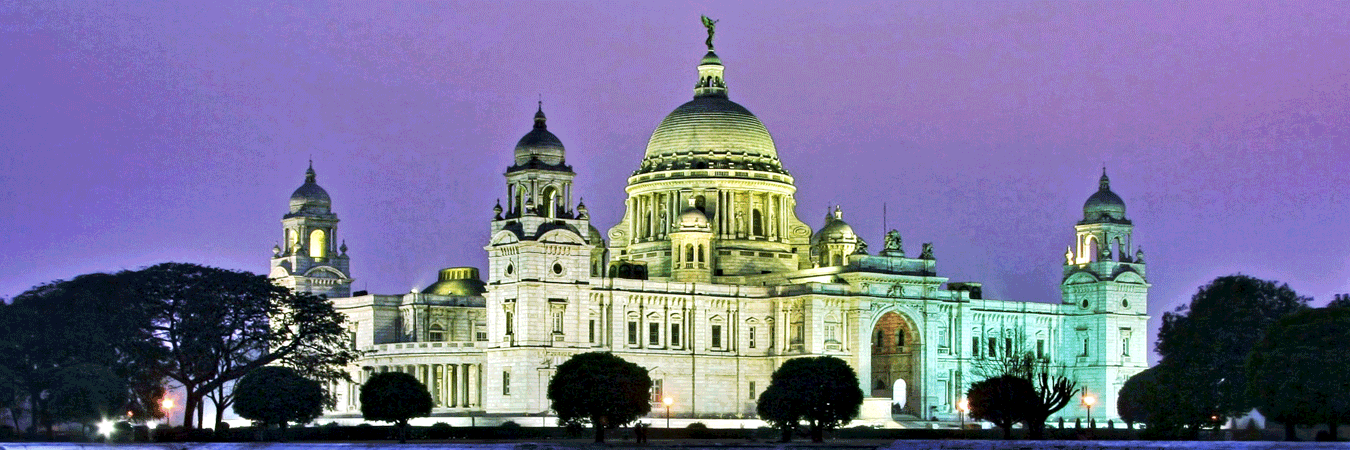
For an avid traveller, nothing gives more satisfaction than visiting places which are more interesting than the norm and do not make in your list of the most favourite destinations. Kolkata is one such city of India, which is full of contradictions and deserves to be explored. Kolkata, formerly known as Calcutta is the capital of West Bengal and the second largest city in India after Mumbai. Kolkata is also known as the intellectual and cultural capital of India – this magnificent city has produced generations of writers, poets, film directors, and Nobel Prize winners. With so much to offer in heritage, culture, and contradictions, Kolkata is one city, which leaves a long-lasting impression on a first-time visitor. Until the 17th century, Kolkata was a village, inhabited by anglers and it saw a tremendous surge in growth at the height of British rule in India in the nineteenth and early twentieth century. Under the British rule, Kolkata flourished marvellously both commercially and culturally and it nurtured a perfect blend of East and West. Lets us talk about the main attractions of Kolkata:
The Indian Museum
The Indian Museum is the largest and the oldest museums in India, which was founded in 1814 at the cradle of the Asiatic Society of Bengal by a Dutch botanist under the British Rule. Since then, it has developed a lot and culminated into the best museum in the country. There are six sections in this museum, which are further divided into 35 galleries. Each gallery contains a wonderful range of various artefacts, antiquities, paintings and mummies etc.
Howrah Bridge

The Howrah Bridge is one of the most renowned landmarks of Kolkata. It is the sixth longest cantilever bridge in the world, which is built over the Hooghly River. This bridge was commissioned in 1943, when it was named as the New Howrah Bridge, because it replaced a pontoon bridge at the same location linking the two cities of Howrah and Kolkata. It was renamed as Rabindra Setu on 14 June 1965 after the name of the great Bengali poet Rabindranath Tagore.
Victoria Memorial

Located on the plains on the banks of the River Hoogly, the Victoria Memorial was built between 1906 and 1921 to commemorate Queen Victoria’s 25-year reign in India. Spread over 64 acres of land, there are 25 galleries in this building which display various antiquities and artefacts. It is one of the most prominent reminders of the British Raj in India. This massive white-marble museum is constructed by using the top quality Makrana marbles, transported from Rajasthan.
Birla Temple
The construction of the temple started in 1970 and it took 26 years to complete the structure. Birla Temple is one of the several Birla temple landmarks, which are sprinkled across various major cities in India. These temples are maintained by the Birla Family of India and dedicated to Lord Krishna. This glorious building was built by using white marble and it is spread across an approximate area of 130 acres of land.
Park Street

Park Street is the most famous food street of Kolkata, as it is home to popular pubs and restaurants in the area. This thoroughfare was one of the prominent nightlife spots in the 70’s and the 80’s. The Kolkata Municipal Corporation gave this place its current official name in honour of Mother Teresa. However, things have changed a lot over the years; Park Street is still one of the most visited areas in Kolkata.
Calcutta Racecourse
The Royal Calcutta turf club was founded in 1847 in the British India and it was the first horse racing organization in India. The Calcutta or the Kolkata Racecourse was established in 1820 and is one of the oldest horse race courses in the country. The races are conducted between the months of July to September and November to March on Saturdays or any other public holidays.
Mother Teresa’s Motherhouse

The Missionaries of Charity’s Mother House is a place of pilgrimage and reverence. Tourists come here to pay homage at Mother Teresa’s large tomb. There is a small adjacent museum room, which displays Teresa’s worn sandals and battered enamel dinner bowl. This place was established by Mother Teresa in 1950 with the purpose to serve humankind. Prayer petitions can be placed in the box on Mother Teresa’s Tomb during the visit. All petitions are offered on the altar during the weekly Friday Mass.
Eden Gardens
Eden Gardens is a famous cricket ground, which is situated in the heart of Kolkata near Maidan. With a seating capacity of 66,000, it is the largest cricket stadium in India and the second-largest cricket stadium in the world behind the Melbourne Cricket Ground. This stadium is the home of the Bengal Cricket Team and the Kolkata Knight Riders of the Indian Premier League. The name ‘Eden Gardens’ has been kept by its makers, who were inspired by ‘The Bible’. The Eden Gardens complex spreads over a massive lush green land, including the cricket stadium, indoor stadium and many gardens, lakes and a Pagoda.
Eco Tourism Park

This is the newest attraction of Kolkata, which was conceptualised by the Chief Minister of West Bengal, Mamata Banerjee on July 2011. The West Bengal Housing Infrastructure Development Corporation developed it. This park is divided into three broad parts – ecological zones, theme gardens and urban recreational spaces. The major attractions of this park are: Rose Garden, Butterfly Park, Music Fountain, Food Park, Banglar Haat, Baul Gram, Shilpi Kuthi Cottages and Conference Hall.
St Paul’s Cathedral

St Paul’s Cathedral is the first Episcopal Church of the eastern world. It is an Anglican cathedral of the Church of North India. It is also an architectural marvel as it is modelled on the “Bell Harry” tower of Canterbury Cathedral and it also resembles England’s Norwich Cathedral with three Gothic stained glass windows and two frescoes in the Florentine Renaissance style. It is located at the southern end of the Maidan in Kolkata, with its eastern side facing the majestic Victoria Memorial. The cornerstone of this church was laid in 1839 and the building was completed in 1847. It is said to be the largest cathedral in Kolkata and the first Episcopal Church in Asia. It was also the first cathedral, which was built in the overseas territory of the British Empire. It is also close to the Rabindra Sadan theatre complex, Nandan and the Birla Planetarium. It is also flanked by a number of ancient trees. The interior of the church offers a visual panorama with outstanding floral designs on the walls. The Life and work of St. Paul are vividly depicted in pictures.
Why You Must Visit Shimla in June
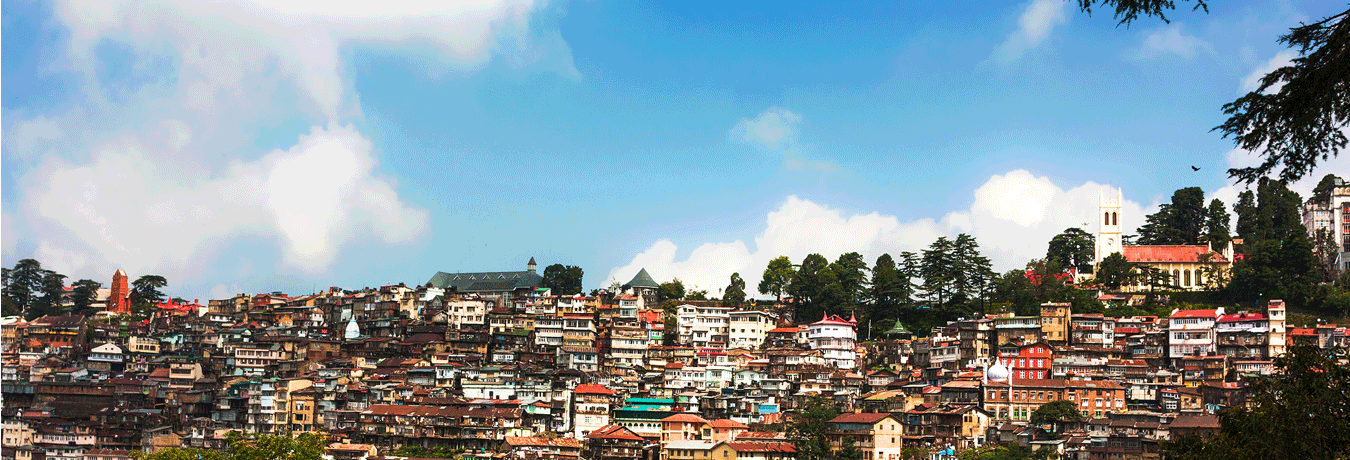
Flanked by forested hillsides from all directions, it would be apt to say that Shimla is the official summer holiday destination of India. It is the capital city of the Indian state of Himachal Pradesh, located in northern India. Shimla was declared as the summer capital of British India in 1864. After India gained independence, this city became the capital of Punjab, another northern state of India and was later named the capital of Himachal Pradesh. Due to the surge in the arrival of tourists in the summer season, Shimla becomes a hub of many activities – especially during the month of June. Himachal Pradesh Tourism Development Corporation also organises some special events during this month to make it a memorable experience for the tourists. So, let’s talk about the main attractions of Shimla and why you should visit this beautiful hill station during the month of June.
Shimla Summer Festival
It is the most important festival of this hill-station, which is celebrated in the first week of June. It is celebrated to welcome the summer season each year. This festival showcases the rich cultural heritage and history of Himachal Pradesh. The Shimla Administration Officials have been organizing this event since 1960 and each year they add new attractions to it. This festival is organized at the Ridge of Shimla. To cater to people of all age groups, many fun-filled activities are also conducted such as musical performances, family games, live theatre, recitals, fashion shows, talent competitions, magic displays, and cultural programs.

Weather
Situated at an altitude of 2,202 meters, Shimla has the subtropical highland climate. While the winter season brings the extremely cold climate in Shimla, it turns into a pleasant weather during the month of June, when the temperature remains between 15°C to 30°C. But, you might have to put on light woolens in the evenings.
Board the Shimla-Kalka Toy Train
Shimla-Kalka Toy Train is a UNESCO World Heritage site and it was built by the British in 1903 to get an easy access to their summer capital Shimla. This train runs for 60 miles through 20 railway stations, 103 tunnels and 864 bridges – the longest tunnel is located near the main railway station at Barog and it is 1.2 km long. Three toy train services run on this track that are named as the Himalayan Queen, the Shivalik Deluxe Express and the Rail Motor Car. It is one of the most scenic train journeys in India, which is endowed with some scintillating views.
Visit Lakkar Bazaar
The famous Lakkar Bazaar of Shimla is located on the eastern side of the Ridge road. Here you can buy the best in local wooden handicrafts. Some of the most popular products which are sold here are wooden toys, trays, pen stands and key rings among others. Hikers also flock to this market to buy wooden walking sticks, which are used for climbing the hilly areas.

Visit Woodville Palace Hotel
Located at a height of around 7000 feet above the sea level, the Woodville Palace Hotel is originally known as the Jubbal Palace. This palace was the residence of the royal family of Jubbal until the year 1977. Spread over 170,000 square feet of land, this palace is complemented by majestic deodar and pine forests. Besides its location, another interesting aspect of this palace is its Indo-Chinese architecture. One can also enjoy a drink or two here at the 1930’s themed Hollywood Bar that has a wall decorated with the signed photographs of the yesteryear Hollywood film stars like Greta Garbo, Spencer Tracy, Clark Gable, Laurel and Hardy, and Katherine Hepburn.
Enjoy Street Food of Shimla
There is a lot of variety of street food in Shimla, as many local shops and stalls serve some mouth-watering local delicacies. One of the most prominent shops is the Bhihari Lal Sharma Stall, which is situated at the Takka Bench above The Ridge. Bhihari Lal was the first fruit chaat seller in the city and he started his shop in 1948. One can enjoy yummy and healthy fruit chaats, served with spicy chutneys. The Verma Tea Stall and Kewal Ka Dhabba, located at Chawda Maidan, serve the delicious butter bun with tea. The Sita Ram and Sons dhaba, located at the Lakkar Bazaar is famous for serving the best channa bhatura in Shimla.

Sightseeing Spots
The prismatic hills of Shimla attract many tourists every year. From adventure enthusiasts to common travellers, there is something for everyone in Shimla. Some of the places, which are worth exploring in Shimla are: Arki Fort, Cultural Complex, Observatory Hill, Gaiety Heritage, Viceregal Lodge and Himachal State Museum. On the other hand, some popular tourist places in Shimla are: The Ridge, Jakhu Temple, Christ Church and Hadimba Temple.
Scenic Spots Around Shimla
Mashobra
This place is one of the only two presidential retreats in India, the other one is in Secunderabad. In fact, Mashobra is that hotel, where Lord Mountbatten and Lady Edwina spent some of their last days in India and they were often visited by Jawahar Lal Nehru, India’s first Prime Minister. This majestic building is surrounded by forests of pine, oak, and cedar trees, which are a part of the Shimla Reserve Forest Sanctuary. Savour the stunning views of the snow-capped mountains from here and further explore the trekking trails and wildlife of this place.
The Hattu Peak Temple
The Hattu Peak temple is located around 65 km from Shimla. This place is known for offering some breathtaking views of the Himalayan Valley. Interestingly, to reach this place, you have to cover the last stretch on foot, which makes the whole endeavour more interesting. The Hatu temple is a small building which is complemented by a beautiful pond and fabulous architecture.
How to Reach
By Air: Jubarhati is the nearest airport, about 23 kilometres from the town. There are regular flights going from Jubbarhatti to Chandigarh and Delhi.
By Train: The small railway station in Shimla is just 1 kilometer away from the centre of the town and it is connected to Kalka by a narrow gauge rail track. The famous toy train of Shimla runs between Kalka and Shimla, covering a distance of 96 kilometres in about 7 hours. Kalka station is the nearest rail-head, which is connected to Chandigarh and Delhi by regular trains.
Top Places to Visit in Ladakh

Located at a height of more than 3,000 meters above the sea level, Ladakh is colloquially referred as, ‘a land of high passes’ in Tibetan language and it is a part of the Jammu and Kashmir state of India. The largest town in Ladakh is Leh. Ladakh as a destination can be depicted as a dreamland for visitors seeking captivating scenic beauty and natural wonders. Visualise those snow-capped Himalayan and Karakoram mountain ranges, deep gorges, verdant landscape, gurgling streams and one can conjure up an overwhelming imagery of a landscape – oozing with mystery and intrigue. Far from the urban cacophony, this place is a whole new world, where you can feel close to yourself amidst tranquil ambience and splendid natural beauty. We have picked up some top places in and around Ladakh, which you should visit to explore the best of this land.
Zanskar valley

Zanskar valley is a sub-district of Kargil, which is flanked by the Himalayan Range of mountains and the Zanskar Mountain Range. Inhabited by about 14,000 people, most of them being Buddhists, this valley is one of the remotest parts of Ladakh. This place was named after the Zanskar river, which flows through the valley. It stays closed for about eight months in a year due to heavy snowfall. During winter, one can reach this valley only on foot through a majestic path, made up of a frozen river. The inhabitants of this valley still follow their age-old traditions and culture, which is one of the main attractions for the tourists. Their livelihood revolves around their cattle, as they continue to live a semi-nomadic life. The town of Padum is the largest town in this valley with a population of around 700 inhabitants and the rest of the region is sprinkled with small villages situated on the highlands.
Pangong Lake

Situated at a height of 4,250 meters on the Changtang plateau in the eastern Ladakh region, Pangong Lake or Pangong Tso is one of the largest brackish lakes in Asia. It is also known as a hollow lake and freezes completely during winter, despite its saline water. Around 160 kilometers away from Ladakh and sprawling over an area of around 100 kilometers across the borders of India and China, this magnificent water reservoir appears like a surreal creation of nature. Due to its brackish water, sunlight creates some awe-inspiring visuals of light. During summer, this lake becomes a temporary home for a number of migratory birds such as the Bar-headed goose and Brahmini ducks. One requires a visiting pass from the deputy commissioner of Leh to visit this lake, as it falls under army control.
Tso Moriri Lake
Situated at an altitude of around 4,500 m, Tso Moriri is a fresh-water lake, which is famous for its pristine and exotic setting. This lake is also located in the Changtang plateau in the eastern Ladakh region like Pangong Lake, and it is entirely within India. Officially, this region is called the Tso Moriri Wetland Conservation Reserve. The road journey from Leh to Tso Moriri Lake offers some remarkable views of an altering landscape from a rugged terrain to verdant scenery. This is also one of the favourite places for bird watchers, who visit this lake during the season of summer when many migratory birds make this place their breeding ground such as: the endangered Black-necked cranes, Bar-headed geese, Brown-headed gulls, Great crested grebe and Ferruginous pochard among others.
Lamayuru Monastery

The Lamayuru monastery is one the most beautiful monasteries in Leh-Ladakh. Located at an altitude of around 3500 meters, this is the oldest Tibetan Buddhist monastery, about 127 Kms from Leh. The barren yet beautiful landscape around this monastery creates an atmosphere of the lunar surface. It is maintained by the Red Hat sect of Buddhism, in which monks wear orange robes and perform old rituals. The most stunning aspect of this monastery are caves, which are carved out of the mountains in an exquisite manner. Other attractions of this monastery are wall paintings, murals, scriptures, and Thangkas.
Kargil
Situated on the banks of the Indus River, Kargil is the second largest town in Ladakh, situated 234 kilometers west of Leh. Blessed with a number of scenic attractions, this sleepy town became famous during the 1999 War between India and Pakistan. In the earlier 19th century, Kargil was a busy town, which had a trade route to and from Afghanistan, China, India and Turkey. Overlooking the snow-capped mountains on all sides, Kargil has an old world charm to it and it is considered as a perfect destination for adventure enthusiasts, who can enjoy trekking and mountaineering here.
Nubra Valley

Located around 140 km from Leh, Nubra Valley is a part of the famous Silk Route. This valley is also known as “the valley of flowers” as it is complemented by some rare and beautiful flowers that fill colours in its lush green landscape. It is a land of tranquil atmosphere and everlasting splendour, overlooking the glaciated peaks of the Karakoram Range. This undefiled place presents an awe-inspiring imagery, which appears as if it is taken from the books on modern art. Two rivers named as Nubra and Shyok that pass through the valley sustain the exotic flora and fauna of this place.
Diskit Monastery

Located 120 kilometers away from Leh, Diskit Monastery is also known as Deskit Gompa or Diskit Gompa. This monastery belongs to the Yellow Hat (Gelugpa) sect of the Tibetan Buddhism and founded by Changzem Tserab Zangpo in the 14th century, which makes it the oldest Gompa in the Nubra valley. The main attraction is a golden Buddha statue, which is 32 meters tall and looks majestic amidst the serene ambience. One can also visit Lachung Temple and Hundur Monastery, which are located nearby. There is a massive prayer hall in this monastery, which is complemented by some stunning images of the guardian deities. Every year in the month of February, a festival is organised in this monastery, which is known as the “Festival of the Scapegoat” and attended by the local people. This festival gives insight into the ancient traditions and rituals of Buddhism.
Magnetic Hill

Located about 30 Kms from Leh towards Kargil, this is one of the most fascinating places in Ladakh. It is a small stretch of road, which is known as “Magnetic Hill” or “Gravity Hill” of Ladakh. This curious natural phenomenon occurs due to the unique layout of this area, which creates an optical illusion of the road being uphill, actually, it is a downhill road. In fact, this hill pulls any vehicle towards it with its magnetic force.
Shanti Stupa
The Shanti Stupa is a Buddhist white-domed stupa on a steep hilltop in Chanspa, at a height of around 4200 meters. It was constructed by a Japanese Buddhist Bhikshu Gyomyo Nakamura in 1991, as a part of the Peace Pagoda Mission. This holy place is not only known for providing a stunning panoramic view of the region, but also for holding the relics of the Buddha at its base, which were preserved by the 14th Dalai Lama. One can savour some amazing views of the sunrise and sunset from this Stupa.
Best time to visit: The best time to visit Ladakh is during the summer season of the region, from June until September. The weather stays clear during this period with an average temperature range during the day is about 20–30°C, but it drops sharply at night. During the months of July and August, trekkers head to Ladakh, when the Manali-Leh and Srinagar-Leh highways are open to vehicles.
By Air: Regular fights to Leh from Delhi, Jammu and Srinagar airports.
By Road: There are two routes. Srinagar to Leh and Manali to Leh.
Srinagar to Leh: The 434-km Srinagar-Leh road. This road stays open from mid-May and November. One can also board the buses of the J&K state road transport corporation.
Manali to Leh: The 473-km Manali-Leh road. Open for traffic from around mid-June to early October. One can also board the buses, operated by the Himachal Pradesh tourism and the J&K SRTC.
Enjoy a gratifying and customised trip to Ladakh with us!
Top 10 Summer Destinations in india
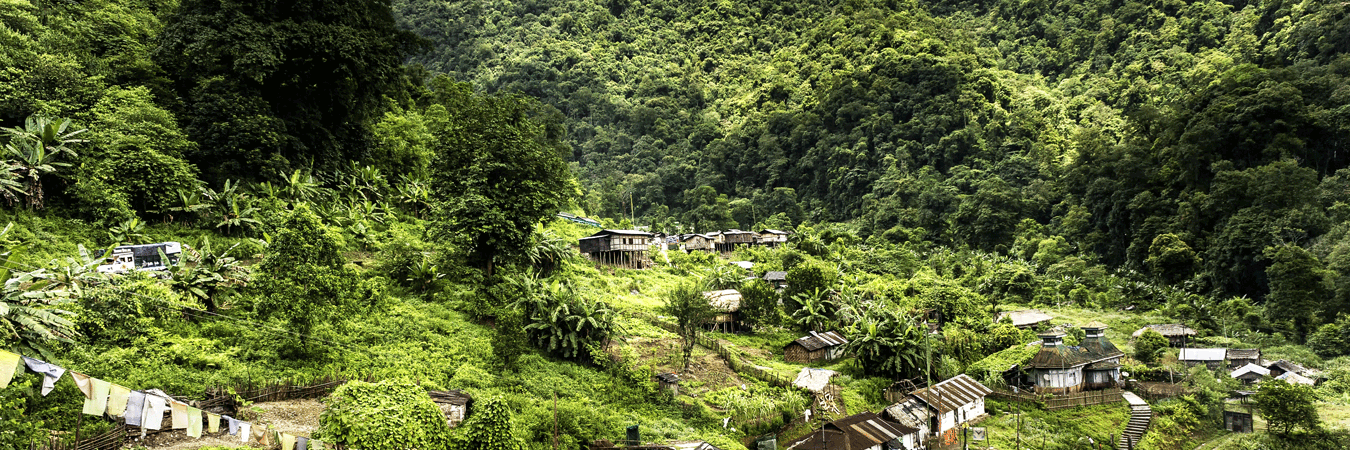
As a traveller, have you ever seen something so intricate, natural, and stunning that it literally swept you off your feet? Visualise a place, which is bestowed with exotic flora and fauna, majestic mountains, and sparkling rivers – we are talking about some stunning valleys of India, which will simply leave you awestruck. Let’s talk about these natural wonders of India, which are worth exploring for any ardent traveller.
Zanskar Valley, Ladakh
Zanskar valley is located in the south-west region of Leh at an altitude of 13,154 ft and spread over an area of 5,000 sq km. This valley is named after the Zanskar River, which flows down from the mountain and waters the rose bushes and other herbal plants in this valley. Nestled amidst snow-capped mountains of the Himalayan range, this is one of the most beautiful valleys in the world. The ravine provides captivating views of the surreal beauty of nature and attracts many tourists. You should know that it remains inaccessible for about 7 months of the year due to heavy snowfall. The Zanskar River freezes and turns into a captivating sheet of snow during winter, which is popularly called as the Chadar trek. A few tourists come here especially in winter to relish the opportunity of trekking on this challenging terrain. Besides that, many visitors come here to explore the ancient Buddhist monasteries. During summers, travellers enjoy white water rafting on the Zanskar River.
How to reach:
By Air: The nearest airport to Zanskar is at Leh. Leh is well connected to major cities like Jammu, Srinagar and Delhi with major airlines flying into Leh. Hire a taxi from the airport or you can go for shared taxis or buses to get to Zanskar Valley.
By Rail: The nearest rail head is Jammu. After getting off at the railway station, one can take a shared bus to Zanskar Valley via Kargil.
Where to stay:
You can stay in the Jammu and Kashmir Tourism Bungalow. Other options are three guesthouses and some campsites in Zanskar. Padum town, which is situated at a distance of 19 kms from Zanskar, has a three-star hotel.
Valley of Flowers, Uttarakhand
Nestled amidst the Garhwal hills of the Himalayan Mountain Range, the valley of flowers has been accredited as a World Heritage Site by UNESCO. It is one of the main attractions of the Chamoli region of Uttarakhand. This beautiful canyon is fittingly named as the Valley of Flower, as it is blessed with a fabulous assortment of gorgeous flowers, which fill up the valley and create an enthralling panorama. In fact, there are some rare varieties of flowers here, such as: the blue Himalayan poppy, Himalayan bellflower, Morina longifolia, Himalayan maple, and brahmakamal – interestingly, these flowers are found only on the higher stretches of the Himalayas. Besides regular tourists, this valley is hugely popular among explorers, botanists and mountaineers, who come here either to study the rare flowers or to enjoy trekking. It is also home to some endangered species of animals such as snow leopard, red fox, musk deer, brown bear, and blue sheep. The best time to visit this valley is between mid-April and June, as it remains closed for 7 months in a year due to heavy snowfall.
How to reach:
By Air: The Jolly Grant Airport is the nearest Airport to Valley of Flowers. You can book a cab to reach Govind Ghat. From there onwards, you have to commence trek of 16 kms to reach the Valley of Flowers.
By Rail: The nearest railway station to Valley of flowers is Rishikesh. You can reach Govind Ghat by bus or cab and then you have to commence trek of 16 kms to reach Valley of Flowers.
Where to stay:
No one is allowed to stay in the Valley of Flower region. So, you can stay at Ghangaria or Govindghat, where you will find GMVN Tourist Rest House and Forest Rest House. Private Lodge and Hotels are also available in these two places.
Kashmir Valley, Kashmir
Snuggled between the Pir Panjal and the Karakoram Range of mountains, the majestic Kashmir Valley is blessed with an unprecedented charming landscape. Over the years, this gorgeous valley has not only captured the imagination of the travellers around the world, but also inspired many artists, poets, and filmmakers. With snow-capped mountains, verdant meadows, cascading waterfalls and beautiful groves of pine trees – this is the only place, where you would feel that the blue sky actually reflects the exquisiteness of the lakes, which are complemented by the beds of blooming flowers.
How to reach:
By Air: Srinagar airport is approximately 14 km from the city. There are daily flights to Srinagar, operated from Delhi, Mumbai and Jammu.
By Rail: Nearest rail head for Srinagar is Jammu about 305 km. Trains from Delhi, Calcutta, Pune, Mumbai and other cities arrive at the Jammu Tawi station daily.
Where to stay: There are many options to stay in Kashmir Valley. One can stay in houseboats (known as Shikara locally) in Srinagar. Most of these houseboats anchor along the banks of Dal Lake and Nagin Lake only. Just like hotels, the houseboats of Kashmir are also categorised. There are Deluxe, A-class, B-class, C-class and D-class houseboats in Srinagar. Besides that, there are many hotels in Srinagar, located around the Dal Lake.
Sutlej Valley, Punjab
The Sutlej Valley is named after the famous Sutlej River, which is the longest of the five rivers of Punjab. This beautiful valley is flanked by some striking snow-capped mountains and verdant hills. It is also home to one of the largest Bird Sanctuaries in India, named as the Harike Bird Sanctuary, which has many rare species of birds such as Yellow Clowned Woodpecker, Water Cock and Tufted Duck among others. This valley is perfect for nature walk. The entire region around this valley is also beautiful and one can take a walk through mustard fields and apple orchards.
How to reach:
By Air: Amritsar Airport is the closest airport situated at a distance of 68 km. Hire a taxi or bus from the airport to reach the Harike Wildlife Sanctuary within one and half hours.
By Rail: The nearest railway station is Tarn Taran railway station situated at 33 km south to the sanctuary.
Where to stay: There are many hotels and rest-houses around 10 km from the Harike Wildlife Sanctuary.
Kangra Valley, Himachal Pradesh
Besides its incredible natural beauty, the Kangra Valley is a worldwide popular destination for the Kangra Fort and Masroor Rock cut temple, which is declared as a World Heritage site by UNESCO and popularly known as ‘The Himalayan Mountains.’ The beauty of this valley lies in its fascinating layers of pine trees and orchards. There are many rivulets in this valley, which are replenished by the glaciers and help in sustaining the incredible ecosystem of this place. The best time to visit this valley is in the month of April. To enjoy the breathtaking views of this valley, one can board the Kangra Valley Railway and soak up the beauty of this region.
How to reach:
By Air: The nearest airport at Gaggal in Kangra is at a distance of 7 km, this is the nearest airport. There are daily flights from Delhi to this place.
By Rail: The nearest broad gauge railhead is Pathankot, 70 km away.Pathankot is on Delhi Jammu Railway line and there are plenty of trains to choose from at different timings.
Where to stay:
There are many hotels and resorts in Dharamshala, 31 km away.
Dzukou Valley, Nagaland
Located on the border of Nagaland and Manipur, the Dzukou valley is one of the most picturesque valleys in the northeast region of India and attract trekkers from all over the world. This amazing valley turns into a carpet of wild flowers in spring, which are watered by two streams of the Japfu and the Dzukou rivers. Besides flowers, this entire valley is flanked by bamboo trees, which create a kind of boundary around these flowerbeds – and these elements blend together to create some remarkable sights. Nature lovers, botanist, and explorers frequent this place – as there is something for everyone and possibly that is why they call it the “Valley of Flowers of the North East.”
How to reach:
By Air: The nearest airport is Dimapur, 91 km. Dimapur gets flights from Delhi, Mumbai and Bengaluru.
By Rail: The nearest railhead is Dimapur, 91 km. You can book a cab or board the NST (Nagaland State Transport) bus from Dimapur to reach here.
Where to stay: There are many hotels and resorts in Dimapur. But, there is no private facility in the valley, so you have to stay at trekker’s hut.
Ketti Valley, Tamil Nadu
One of the most fascinating facts about the Ketti Valley is that it is the second largest gorge in the world. Nestled amidst the blue Nilgiri Mountains, this gorgeous valley is blessed with a variety of flora and fauna. One can enjoy many activities in this natural paradise such as hiking, trekking, and bird watching. This valley is flanked by beautiful hills, which cover the area from Coonoor to Ooty in Tamil Nadu. You can also take the toy train from Ooty, which runs through this valley, to savour its awe-inspiring beauty. Other main attractions of this valley are: the Shiva Lingam temple, tea plantations and some waterfalls in the area.
How to reach:
By Air: The nearest airport is Peelamedu Airport, 48 km away. You can book a cab or take a bus from there to reach the valley.
By Rail: Ketti has a railway station, which gets trains from the major cities of India.
Where to stay: There are many hotels and resorts in Ketti.
Dibang Valley, Arunachal Pradesh
Dibang Valley is more popular for its wildlife than its overall natural beauty. It is named after the Dibang River, which flows through this valley in Arunachal Pradesh. Another main attraction of this valley is that it is situated near the Indo-China border and divided into two sections. While its upper half belongs to some rare and endangered animals like Gongshan and Mismi Takin, the second half is home to a wide variety of birds. This region is complemented by undulated mountains, waterfalls, and lakes, which contribute to making it a natural paradise.
How to reach:
By Air: The nearest Domestic Airport is Chabua Airport, Dibrugarh, 192 km, and it is well connected to many major cities like New Delhi, Mumbai, Chennai, Kolkata, Bangalore, Ahmedabad, Dimapur and Hyderabad.
By Rail: The nearest Railway Station is Murkeongselek Railway Station from Anini located at a distance of 323 Kms from the district headquarters.
Where to stay: There are some medium to budget accommodations available near the Dibang Valley such as: Circuit House, Minu Hotel, Forest Rest House and Lhasa Hotel among others.
Chambal Valley, Madhya Pradesh
A few decades ago, the Chambal Valley was considered as one of the most notorious places in India, which were ruled by some dacoits. Things have completely changed over the years and now people frequent this valley to savour its scenic beauty. It is named after the Chambal River, which flows through this valley. One of the most fascinating aspects of this valley is that it is surrounded by verdant mountains as compared to the valleys, found in the Himalayan region, which are flanked by the snow-capped mountains. The lush green forests of this valley are home to a variety of flora and fauna. Other main attractions of this place are some prehistoric sites in the form of temples, which are sprinkled across the valley and offer interesting insights about the history of India.
How to reach:
By Air: The nearest airport is in Agra, 70 kms. You can book a taxi or take a bus ride to reach here.
By Rail: Agra is the nearest rail head.
Where to stay: There are many accommodation options available near the Chambal Valley.
Silent Valley, Kerala
Located in the Nilgiri Hills of Kerala, the Silent Valley is home to many endangered animals and birds. This verdant valley is also blessed with some rare plants, which are found in its evergreen forests. In fact, there is a National Park in this valley, which has been specifically created to protect its rare flora and fauna. There are various lakes and hillocks in this valley, which contribute in supporting its fragile ecosystem.
How to reach:
By Air: The nearest airport is Coimbatore, 68 Km. You can book a taxi or take a bus ride to reach here.
By Rail: The nearest railhead is also Coimbatore.
Where to stay: There are many accommodation options available near the Silent Valley.
Planning to travel to India? Check out some Amazing Options!
Top 10 Virgin Beaches of India
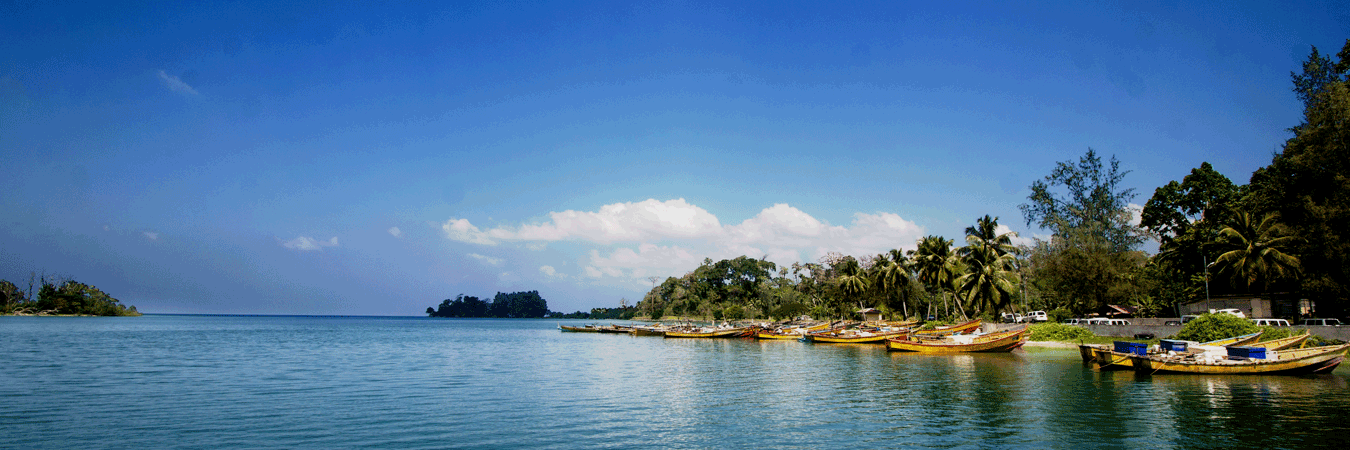
As the temperatures start soaring across the nation, head towards some of the finest beaches in India to beat the heat in style. India is one of the few countries in the world, which has a long coastline and many gorgeous beaches. From the rocky and pebbled shores to golden sands – India is a heaven for beach lovers and water-sports enthusiasts. More often than not, when we talk about the beaches of India, common destinations that come in the mind are, Goa, Kerala, and Tamil Nadu. Huge crowds usually throng all the popular beaches of these states every year. However, what about those who are looking for serene and incredibly beautiful beaches? Well, in that case, you can visit many virgin beaches of India, which have remained untouched by commercialisation and offer a lot to explore.
St. Mary’s Beach, Karnataka
Also known as Thonsepar and Coconut Island, St. Mary’s beach is spread across four small islands in the Arabian Sea, which are situated off the coast of Udupi in Karnataka. This beach is particularly famous for its amazing geological formation, made up of columnar basaltic lava, which creates some spectacular views. Travellers take a ferry ride from Malpe, a fishing harbour to visit this uninhabited beach, complemented by a beautiful and pristine coastline. This virgin beach does not have any accommodations for the visitors except a few concrete tiles to sit. A small part of the beach is filled with seashells, which are sprinkled around on the sand.
Best Time to Visit: December and January.
Cavelossim Beach, Goa
Dotted by the lush greeneries and picturesque hillocks, the Cavelossim Beach in Goa is popular for its white sand and contrasting black rocks. As compared to other beaches in the state, this beach is very peaceful and quite where you can enjoy the majestic views, created by the confluence of the great Arabian Sea and Sal River. This beach stretch begins from the Majorda town in the north to the Cavelossim in the south. Majorda town has one of the largest temples in the state, which is dedicated to the goddess Shri Shantadurga. Take a walk on its golden sands to soak in the beauty of a serene and stunning ambience.
Best Time to Visit: November to March.
Agatti Beach, Lakshadweep
Blessed with enormous aquatic diversity, Agatti beach is known for turquoise blue water, multi-coloured fishes, sparkling coral reefs, and sea turtles. This beach is a part of a small chain of islands spread across an area around 450 km off Cochin. The entire beach is covered with lush green coconut palms and small hillocks. The main attraction of this beach is its soothing and peaceful setting. One can savour the latent beauty of this island at the time of low tides when reefs create striking views. There are other opportunities to enjoy various water sports here like scuba diving, snorkelling, fishing, kayaking, and sailing.
Best Time to Visit: October to April.
Radhanagar Beach, Andaman and Nicobar Islands
Undoubtedly, one of the best beaches in Asia, Radhanagar Beach has been remained a riddle for travellers because of its captivating appeal and unscathed elegance. However, it is named as “The 7th best beach in the world” by Time Magazine, this beach does not receive many visitors every year – maybe because of its location. The azure and crystal clear waters of this beach create an awe-inspiring imagery amidst a serene environment, which certainly lifts the spirits of the visitors. The innate beauty of this beach lies in its white sand and blue waters and palm trees.
Best time to visit: November to April
Serenity Beach, Pondicherry
Fringed by palm trees, this beach is considered as an amazing destination for all those seeking tranquillity amidst an overwhelming ambience. This beach is named after a resort, which is quite popular here and its original name is Kottakuppam beach. One of the attractions of this beach is a lane of rocks, which is exquisitely placed within the sea and the entire structure appears like a tail or a bridge, emerging from the water. It is one of the most beautiful beaches in Pondicherry, which is complemented by shimmering waters and golden sands. However, there is so much to explore and experience on this beach, you would never find it over-crowded.
Best time to visit: September to March
Nagoa Beach, Diu
Emerald water, white sands, and verdant forests, Nagoa Beach is one of the most beautiful and largest beaches in India, which is located on the southeast of Diu Island. Overlooking a quaint fishing village, the most outstanding thing about this village is its beauty and setting as this land is bestowed with all that you can call exquisite and has remained untouched by any sort of commercialisation. The swaying palm trees and cool breeze create an invigorating environment for the visitors, who can also enjoy swimming and other water sports here.
Best Time to Visit: April to October
Cola Beach, Goa
Dotted by coconut groves and small hillocks – this beach is quite different from the other popular beaches of Goa. This uninhabited beach has remained one of the last virgin beaches in Goa, which is a perfect gateway for all those who are looking for a comforting atmosphere to get some peace of mind. Savour the splendid views of sunrise and sunset here against a majestic backdrop. You can also spot some seagulls here, which further add to the overall beauty of this virgin island.
Best Time to Visit: October and February.
Talasari Beach, Orissa
Known for its majestic coconut and palm groves, Talasari beach is located in the Baleswar district of Odisha. Interestingly, the name Talasari is a combination of two words – Tala means palm and Sari means row. Thus, this beach earned its name because of the palm trees, which have covered almost 70% of its total area. One can savour the beauty of its beautiful sand dunes and mild waves, which create a perfect ambience. The calm waters of this beach also allow people to enjoy swimming and other water sports here.
Mochemad Beach, Maharashtra
Nestled beautifully amidst several verdant hills and mountains, Mochemad Beach is located around 10km from the town of Vengurla in Maharashtra. This unspoiled and stunning beach has been remained one of the favourite destinations for bird-watchers, as it is home to innumerable migratory birds and aquatic species. There are many naturally adorned spots on this beach, where one can relax and savour the innate beauty of the surroundings, which also include crystal-clear waters and golden sands. In fact, this clean beach also has some remarkable attractions nearby such as forts and Sargeshwar Shiva temple. The sunrise and sunset views are considered as other main attractions of this serene beach.
Best Time to Visit: October to February.
Yarada Beach, Vishakhapatnam
Far away from the hustle-bustle of a city, Yarada Beach in Vishakhapatnam is immensely blessed by nature. Complimented by verdant hills and thick groves on three sides, this beach has remained untouched by any sort of commercialisation. This beach also has the second-largest coastline in India.
Best time to visit: October- March
Andaman and Nicobar Islands: Pristine Destinations of India
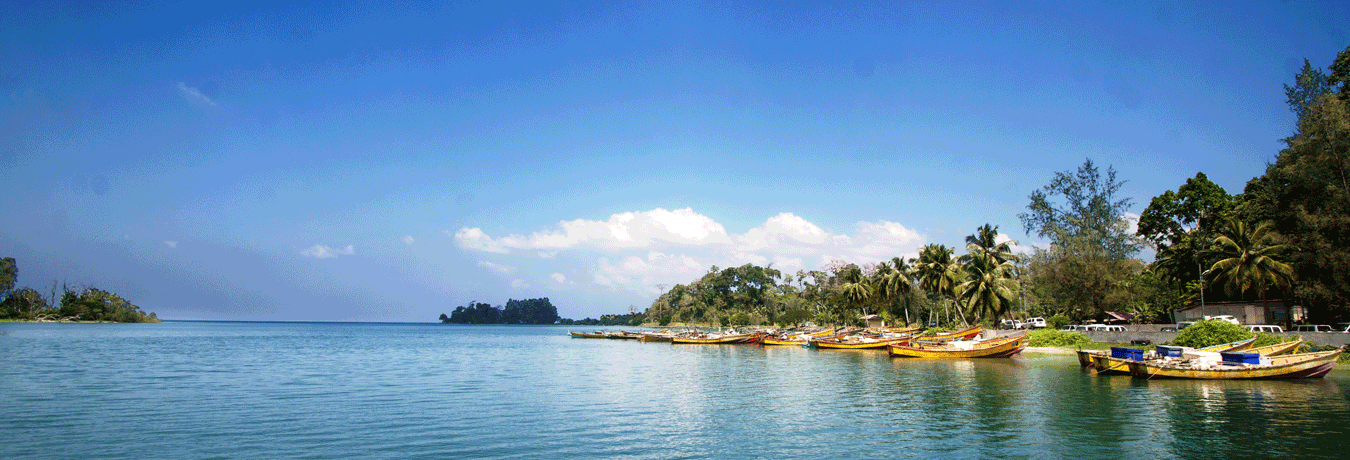
Spread across a total area of 8,073 sq kilometers , the Andaman and Nicobar Islands were once a home to many indigenous tribes and now-a-days known as one of the most exotic tourist destinations of India. These islands earned a ghastly status during the colonial rule in India, when the freedom fighters were sent to these islands. The immaculate natural beauty of these islands presents a contrasting image against the days of British occupation of India, when these serene islands were developed into a penal colony. After the exodus of British from India, this archipelago caught the attention of travellers and gradually emerged as one of the most sought-after destinations in India. Situated at the confluence of Andaman Sea and the Bay of Bengal – these islands are popular destinations for the lovers of water sports and natural wonders. The serene beaches of these islands are characterised by their pearl-white sand and sparkling blue waters – most importantly, the weather stays temperate during the most of the time in a year. So, let’s talk about the main attractions of these islands:
Cellular Jail, Port Blair
Once a notorious British prison, which was also known as Kaali Paani (black waters), the Cellular Jail was turned into a National Memorial after Indian earned independence and now, this building has emerged as the top tourist attraction of these islands. Located at Port Blair, it took ten years to construct this massive jail, which was initially used in 1906, when it had more than 20 wings – some of them were destroyed during the WWII. The current building has 7 wings with each block constructed on a criss-cross pattern with a watch tower in the middle, which was used to keep an eye on the prisoners in those days. Some of its part has been transformed into a hospital, which serves the locals here. Each day a sound-and-light show is held here in the central ground to showcase the history and heritage of the jail in details.
Limestone Caves, Baratang Island
These natural Limestone Caves in Baratang Island are one of the main attractions of Andaman and Nicobar Islands. These marvellous natural spectacles are created over the millions of years. Located in an uninhabitable part of the island, these caves have been in their natural state since the time immemorial. The route to these caves goes through a dense forest and tribal reserves, which showcase the fascinating marks of the pre-historic times. One can also spot sun-bathing crocodiles in these caves, which contain the stalactites and the stalagmites, constantly transforming into some haunting shapes due to natural erosion.
Bharatpur Beach, Neil Island
Hugely popular for its white shores and coral reefs, the Bharatpur beach is located at the jetty near the Neil Islands, also referred as the coral capital of Andaman. This place is frequented by many snorkeling enthusiasts and marine life explorers. Leisure travellers can also enjoy the coral viewing here by hiring a glass bottom boat or indulge in some adventurous activities like scuba diving and swimming.
Radhanagar Beach, Havelock Island
Radhanagar beach is located on the western coast of the Havelock islands. Because of its serene ambiance, sparkling blue waters and natural beauty, this beach was extolled as “Asia’s Best Beach” in 2004 by the TIME Magazine. The placid waters of this beach do not receive any wave action, which makes them perfect for enjoying various activities such as snorkeling, scuba diving and boating etc. The overall setting of this beach is complimented by white sands, blue waters and serene ambiance that make it a splendid destination.
Marina Park, Port Blair
This place is a must-visit site for all those who want to know about the aquatic life of these islands. Managed by the Indian navy, it is also known as ‘Samudrika Marine Museum’ – this park is solely developed to create awareness among people about the aquatic life and its related aspects. There are large tanks inside the park, which are filled with coral reefs and various sorts of aqua flora and fauna, which are found on these islands.
The Great Nicobar Island, Nicobar
Covering an area of 1,045 sq kilometers, this is the largest among the Nicobar Islands. It is a massive island with a sparse population of around 10,000 inhabitants, which apparently contributes in the sustenance of its rain-forest – a treasure trove of a diverse wildlife. Due to its exotic location, this island supports a wide variety of aquatic fauna. It is also a home to one of the oldest tribes in the world, know as “Shompen.” Some of the unique fauna of this place is comprised of robber crab, Nicobar pigeon and crab-hunter macaque.
Mount Harriet National Park, Port Blair
There are about nine national parks in Andaman and Mount Harriet National Park is considered as the most beautiful one. It also has the second highest peak in the Andaman and Nicobar Islands. One can enjoy some awe-inspiring views of the sunrise from its trek, which is about 16 kilometers long – from Madhuban to Mount Harriet. Visitors can behold the stunning views of its exotic flora and birds, while striding along its verdant trail.
Viper Island, Andaman
As the name suggests, the Viper Island is known for the variety of snakes, which are found in every corner of this island. There are ruins of a jail, part of the cellular jail on this island, which was used to incarcerate the Indian freedom fighters. The dreadful remnants of gallows and other modes of punishment are still present on this island. This jail had many renowned political prisoners during India’s struggle to Independence. Now, this place is known for its picturesque location.
Corbyn’s Cove Beach, Port Blair
It is the nearest beach from Port Blair, which is blessed with immense natural beauty. Brimming with the verdant palm groves, there are various restaurants and bars in this area which make it a favourite tourist hub in Andaman. Visitors come here to enjoy various water sports such as scuba diving, jet skiing, glass bottom cruises and snorkeling. It is also close to the Cellular Jail, one of the most popular heritage destinations of Andaman and Nicobar islands.




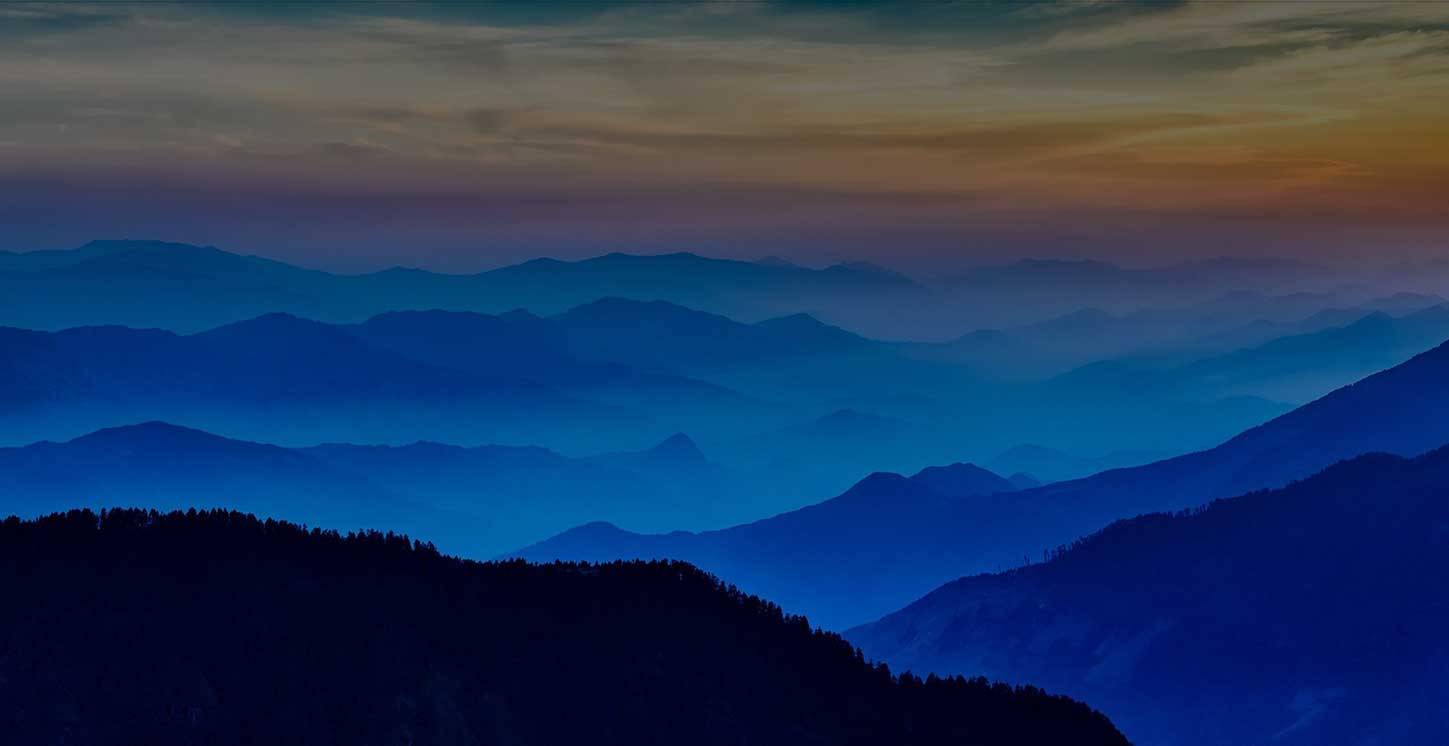
 +1-(765)-586-1210
+1-(765)-586-1210 +44-2030-2689-44
+44-2030-2689-44 +91 124 4361906
+91 124 4361906








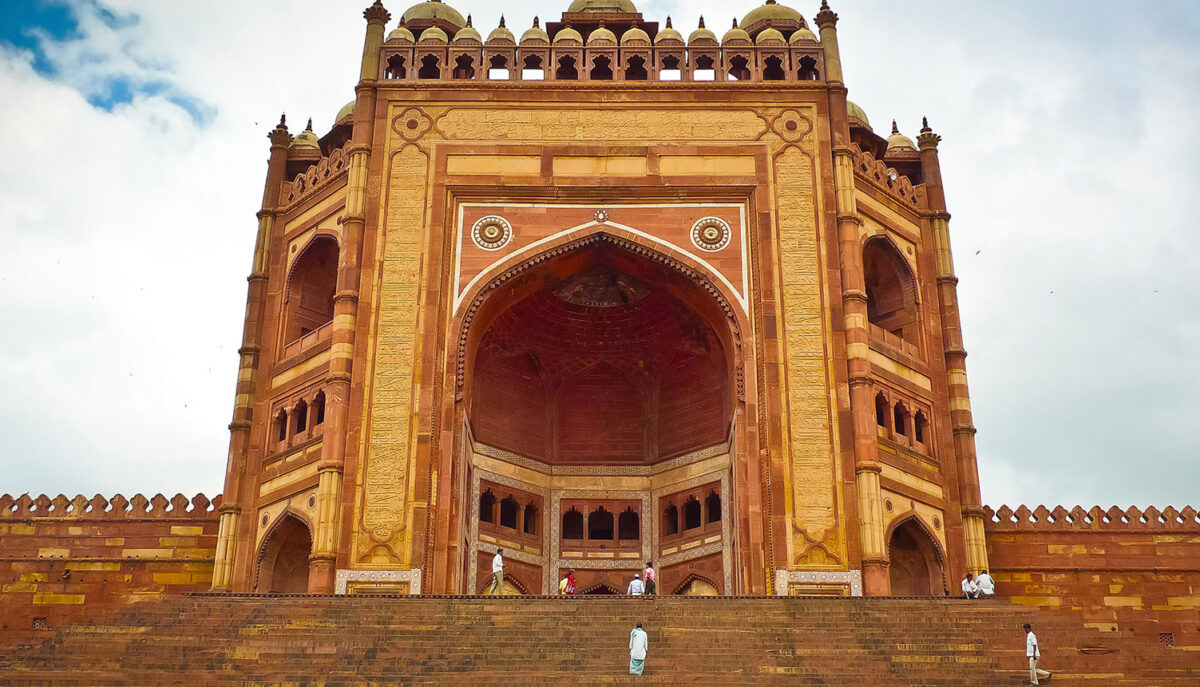
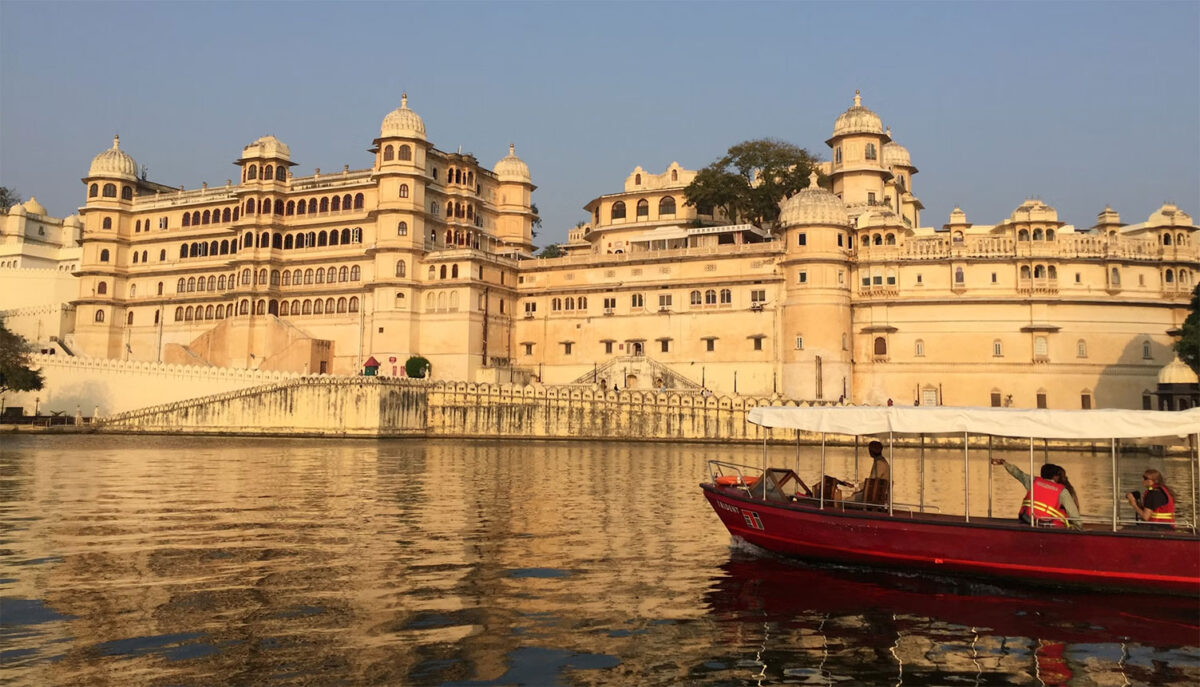

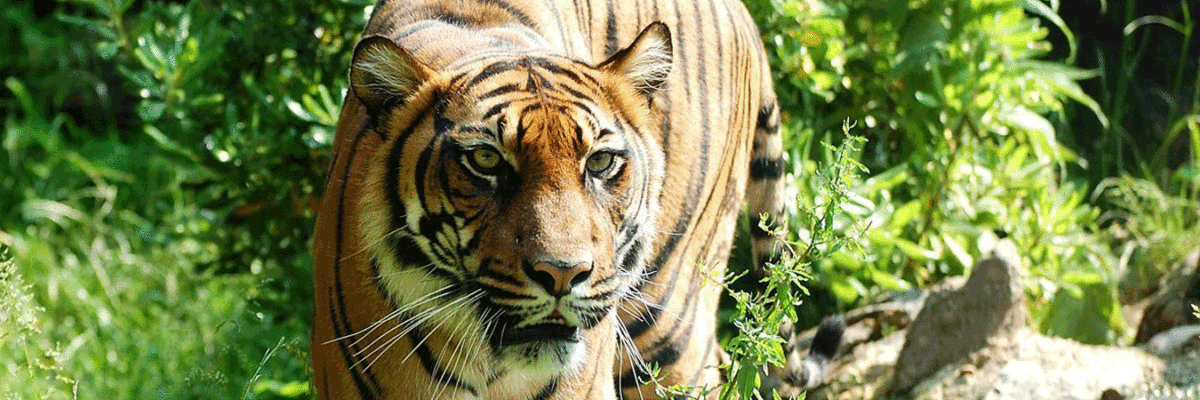
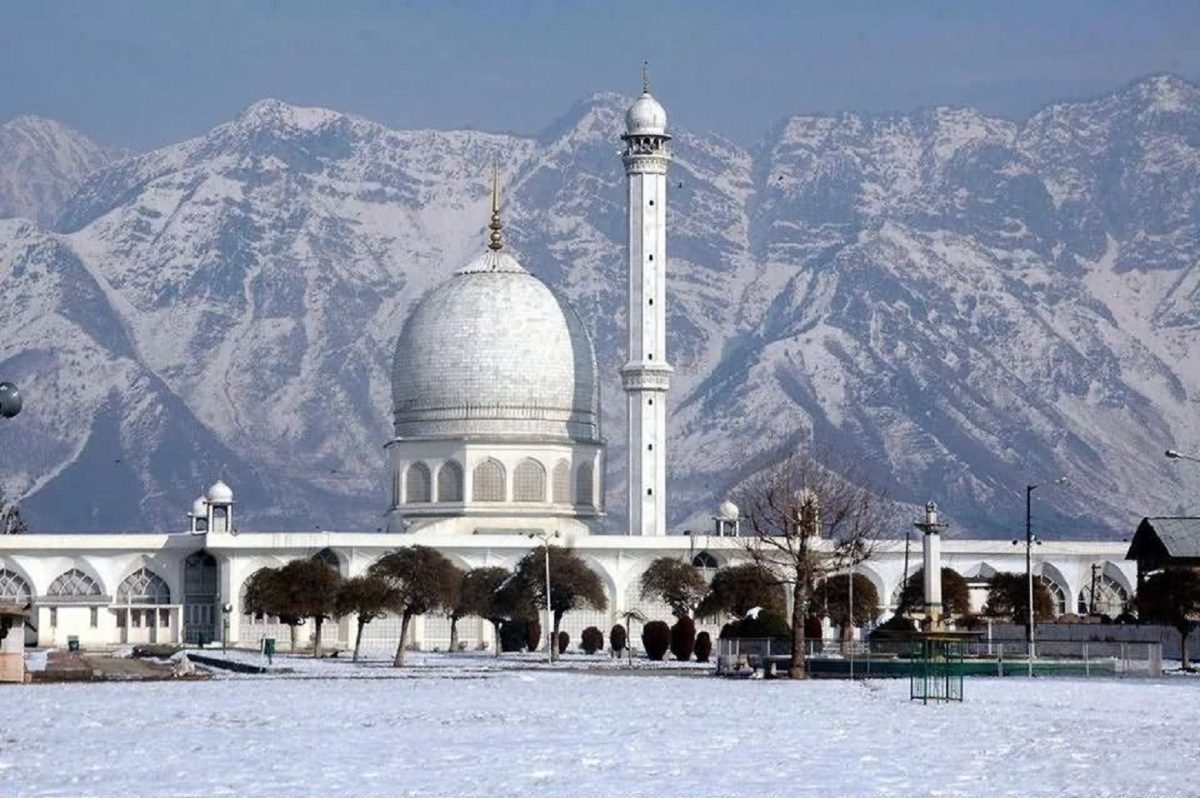


 +1-(765)-586-1210
+1-(765)-586-1210 +44-2030-2689-44
+44-2030-2689-44
